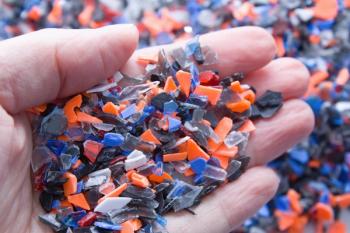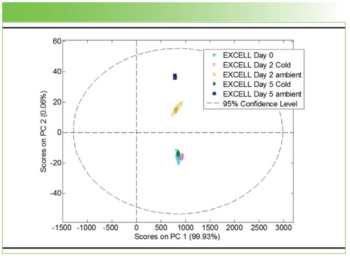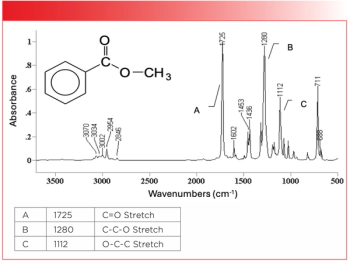Key Points
• NIR spectroscopy enables rapid, non-destructive analysis of honey quality.
• NIR effectively detects adulteration and verifies honey’s botanical and geographical origin.
• Chemometric models are essential for interpreting NIR spectral data accurately.
• NIR can be easily integrated into routine quality control workflows in food labs.
Introduction and Relevance
Honey, a globally cherished natural product, faces persistent threats from adulteration, mislabeling, and fraud—issues that compromise quality, safety, and consumer trust. Traditional analytical methods such as high performance liquid chromatography (HPLC) and gas chromatography–mass spectrometry (GC–MS) are accurate but often destructive, time-consuming, and costly. To address the growing need for rapid, robust, and non-destructive alternatives, Near-Infrared (NIR) spectroscopy has emerged as a transformative tool in the food industry (1–4).
The relevance of NIR spectroscopy in honey analysis stems from its ability to simultaneously quantify multiple compositional parameters while also enabling authentication based on botanical and geographical origin. Coupled with multivariate calibration and classification models, for example, principal components analysis (PCA), partial least squares (PLS), and linear discriminant analysis (LDA), NIR systems can detect adulterants like glucose syrup and invert sugar and determine key quality attributes such as 5-hydroxymethylfurfural (5-HMF), moisture, and proline content. This tutorial article offers a practical roadmap for food analysts and spectroscopists to apply NIR spectroscopy in routine honey testing, with a focus on accuracy, speed, and regulatory compliance (1–4).
Principles and Definitions
Near-Infrared Spectroscopy (NIR):
NIR spectroscopy operates in the spectral region of ~780–2500 nm and measures molecular overtone and combination vibrations, primarily involving C-H, O-H, and N-H bonds. These vibrations reflect the chemical composition of honey, including sugars, water, proteins, and organic acids (1-6).
Chemometric Modeling:
Due to the overlapping and broad absorbance bands in NIR spectra, statistical tools such as PCA and partial least squares regression (PLSR) are required to extract meaningful data. These techniques allow for both qualitative classification and quantitative prediction (1–6).
Key Honey Quality Parameters:
- Sugar Content: Glucose and fructose ratios.
- Moisture Content: High moisture (>20%) can promote fermentation.
- 5-HMF (5-Hydroxymethylfurfural): Marker of heat treatment and aging.
- Proline Content: An amino acid linked to the natural origin of honey.
- Adulterants: Added sugars or syrups that degrade authenticity.
How It Works in Practice
Sample Preparation:
Minimal preparation is needed. Honey samples can be scanned directly using transmission or transflectance cells. In-line and at-line measurements are also feasible using fiber optic probes. Temperature equilibration (~25 °C) is advised for reproducibility (1–4).
Spectral Acquisition:
- Use a benchtop or portable NIR spectrometer with suitable detectors (for example, InGaAs for 1100–2500 nm).
- Acquire spectra in the NIR region (typically 1000–2500 nm) at resolutions of 4–16 cm⁻¹.
- Perform baseline correction and smoothing during preprocessing.
Data Preprocessing:
- Apply mathematical treatments to reduce scattering effects and enhance spectral features:
- Multiplicative Scatter Correction (MSC)
- Standard Normal Variate (SNV)
- First or second derivatives (Savitzky-Golay)
Model Building (1):
- For quantification, use PLSR against reference lab values (for example, for sugar, moisture, 5-HMF).
- For classification, employ PCA, LDA, or soft independent modeling of class analogy (SIMCA) to differentiate botanical origins or detect adulteration.
Validation:
- Use cross-validation or external validation sets.
- Evaluate root mean square error of calibration (RMSEC), prediction (RMSEP), and R² values.
- Perform outlier detection and leverage residual analysis.
Application Examples
1. Quantification of Sugar and Moisture Content:
Biswas and Chaudhari’s review demonstrated that NIR spectroscopy, coupled with PLSR, could predict glucose, fructose, and moisture content with high accuracy (R² > 0.95), matching results from classical HPLC and refractometry (1).
2. Detection of Adulteration:
Sophisticated NIR-based classification models can distinguish pure honey from adulterated samples containing corn syrup or rice syrup, even at 5–10% inclusion levels. PCA combined with LDA enables robust detection with over 90% classification accuracy (1).
3. Botanical and Geographical Origin Classification:
Spectral patterns, when analyzed via PCA or SIMCA, can differentiate honeys from different floral sources (for example, acacia vs. clover) or countries of origin (2). This application supports regulatory enforcement and supply chain verification.
Tips and Common Pitfalls
- Sample Homogeneity: Honey must be well-mixed and free of air bubbles or crystals to ensure reliable spectra.
- Calibration Transfer: Spectral data from different instruments or brands may vary; use transfer techniques like piecewise direct standardization (PDS).
- Overfitting Models: Avoid over-complex models that perform well on training data but poorly on new samples; limit the number of latent variables in PLS.
- Temperature Effects: NIR spectra can be temperature-sensitive; stabilize the sample environment, or incorporate temperature correction.
- Reference Method Accuracy: Ensure high-quality reference data for model calibration; errors here propagate into NIR predictions.
Potential Figures and Diagrams (Text Summary)
Although this mini-tutorial does not include visual figures, the following descriptions summarize what would typically be presented graphically in a research publication setting:
- NIR Instrumentation Setup: A basic NIR spectroscopy setup for honey involves directing near-infrared light through a honey sample contained in a transparent cell (such as a quartz cuvette or flow-through cell). The transmitted or reflected light is captured by a detector, and the resulting spectrum is analyzed. Some setups use fiber-optic probes for direct in-line measurements.
- Spectral Characteristics of Honey: The NIR spectra of honey typically display broad absorbance bands due to O-H (water), C-H (sugars), and N-H (amino acids) functional groups. Specific regions around 1450 nm (water), 1700–2100 nm (sugars), and 2200–2400 nm (minor components) are especially informative.
- Chemometric Classification Using PCA: principal component analysis (PCA) reduces the complexity of spectral data by projecting samples into a multidimensional space. When applied to honey, PCA can reveal clear clustering patterns that distinguish pure from adulterated samples or classify honey based on floral source or geographic origin.
- Quantitative Calibration with PLSR: partial least squares regression (PLSR) allows prediction of honey quality parameters (for example, moisture, sugar content) by correlating spectral data with reference lab measurements. Calibration plots typically show strong linear relationships with R² values above 0.95, indicating accurate predictive models.
These text-based summaries reinforce that NIR spectroscopy, supported by chemometric models, provides both qualitative discrimination and quantitative estimation in honey analysis, all without requiring destructive sampling or extensive sample preparation.
Conclusion and Practical Takeaways
NIR spectroscopy offers a rapid, eco-friendly, and effective solution for ensuring honey authenticity and quality control. By enabling simultaneous analysis of key parameters and the detection of fraud, NIR systems reduce dependency on laborious chemical assays. Their integration into industrial quality assurance workflows helps enforce labeling compliance, enhance consumer safety, and streamline production (1–4).
For best results, analysts should pay close attention to sample handling, model development, and validation. When combined with chemometric tools, NIR spectroscopy becomes a powerful ally in the fight against food fraud, not only in honey but across the broader food industry (1–4).
References
(1) Biswas, A.; Chaudhari, S. R. Exploring the Role of NIR Spectroscopy in Quantifying and Verifying Honey Authenticity: A Review. Food Chem. 2024, 445, 138712. DOI: 10.1016/j.foodchem.2024.138712
(2) Ruoff, K.; Luginbühl, W.; Bogdanov, S.; Bosset, J. O.; Estermann, B.; Ziolko, T.; Amadò, R. Authentication of the Botanical Origin of Honey by Near-Infrared Spectroscopy. J. Agric. Food Chem. 2006, 54 (18), 6867–6872. DOI: 10.1021/jf060770f
(3) Calle, J. L. P.; Punta-Sánchez, I.; González-de-Peredo, A. V.; Ruiz-Rodríguez, A.; Ferreiro-González, M.; Palma, M. Rapid and Automated Method for Detecting and Quantifying Adulterations in High-Quality Honey Using Vis-NIRs in Combination with Machine Learning. Foods 2023, 12 (13), 2491. DOI: 10.3390/foods12132491
(4) Woodcock, T.; Downey, G.; Kelly, J. D.; O’Donnell, C. Geographical Classification of Honey Samples by Near-Infrared Spectroscopy: A Feasibility Study. J. Agric. Food Chem. 2007, 55 (22), 9128–9134. DOI: 10.1021/jf072010q
(5) Workman, J.; Weyer, L. Practical Guide and Spectral Atlas for Interpretive Near-Infrared Spectroscopy, 2nd ed.; CRC Press: Boca Raton, FL, 2012.
(6) Osborne, B. G.; Fearn, T.; Hindle, P. H. Practical NIR Spectroscopy with Applications in Food and Beverage Analysis, 2nd ed.; Longman Scientific & Technical: Essex, U.K., 1993.





